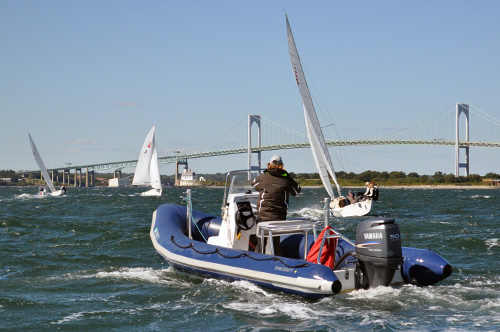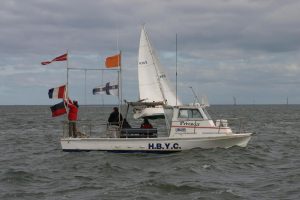
Tips from Sailing Greats and legends.
CORRECTION TO LAST WEEK’S BLOG.
In my haste to send out my already late Blog, during the paring down to make the article short and easy to read I eliminated the essence of “shifting Gears in a Lull” what should have been included follows in bold italics.
Bearing off to restore luff telltale flow in a lull is a bad habit. Frank Bethwaite recommends you consider trimming in and very slightly feathering down in a lull and unnecessary steering will slow you down. The boat will slow down due to the lull and moves the apparent wind back closer to its direction before the lull. If the lull persists, your final heading might be only a touch lower than your original heading. If you steer down initially, you will then need to steer up again as the apparent wind comes back to its original direction.


Moose McClintock
learned that twings down on a spinnaker sheet or guy is similar to applying vang tension on a mainsail; it closes the leech and stabilizes the kite. He taught this while sailing on Farr 40s with the kite up in big breeze and waves.
Jonathan McKee
The farther away the jib clew is from the lead, the more you have to move it to make a change. An Etchells jib clew almost touches its lead; therefore, small changes make a big difference. On the other hand, a Melges 20 jib clew and lead are much farther apart, so your range of jib-lead movement is greater from light to heavy air.
Dave Ullman
explains that raking your mast forward will give you more power because the wind flows over your sails closer to a 90-degree angle. It also closes your leeches. Raking back generates more up-flow, from front to back, decreasing power.
It also twists the sails and effectively moves the jib lead aft (because your jib clew lowers toward the lead), which also decreases power.
Buddy Melges
says to practice tacks and jibes because they can provide massive gains in short amounts of time especially if you are practising by yourself, spend a lot of time on both.
Vince Brun’s
lesson was that while sailing upwind in flat water you can pinch and get away with it because nothing is disturbing the flow over your sails and blades. But as the chop increases, you have to put the bow down to keep speed.
The choppier it is, the lower you have to sail.
Chop throws the boat around and makes it pitch fore and aft. This causes everything to easily stall, especially when you slam into waves.
Make sure you ease your sails to increase the twist and decrease helm load. This bow-down twisty mode is more forgiving and keeps the boat moving fast.
Skip Whyte,
coach of the University of Rhode Island sailing team knows a lot about sailing dinghies. He preaches sitting upright with good posture so that you can better see the wind and the sails. When you need to scoot in, slide your butt and hips in first.
oing so keeps your head outboard, again helping visibility. Slouching in toward the boom is uncomfortable and less effective.
Ed Adams
explains the importance of setting the foot of your jib — ideally, the majority of the foot — so that it kisses the deck. The seal formed between the sail and the deck forces wind aft.
Rather than allowing it to escape underneath the sail. Capturing and accelerating the wind gives you increased power and lift.
Karl Anderson
preaches the importance of delivering a positive message to the team, especially after a tough day, let them know the team is still in good shape and all is well. Make everyone feel like they’re still in the regatta. This goes a long way, especially if you are respected on the boat.
Larry Suter
explained how, when the pin is favoured by 10 per cent, it takes about 10 per cent longer to get to the line. This is compared to a square line from a given distance. Your approach angle is more parallel to the line.
If the boat is favoured by 10 per cent, it takes about 10 per cent less time to reach the line from the same distance because you are sailing more directly at the line.
That’s why there are more on course sides and general recalls when the boat is favoured. It’s critical to factor in line bias when setting up for the start.
James Lyne,
coach to many top teams, emphasizes the lifted tack. In an oscillating breeze, he says, if you sail a header out of the gate or off the starting line, you end up missing the first shift and often end up missing shifts later up the beat. As you sail a header early in the leg, you rapidly get near the layline.
If you get to the layline early in the beat you have painted yourself into the corner. Later up the leg, if you get headed, you don’t want to tack because you are already on an edge, with not much distance to sail the other way. You have a dilemma because you are still on the long tack, but you are also headed.
You end up sailing through a header or two later in the beat, compounding your losses. Those who sail the lifted tack more often are positioned in the middle of the course and don’t mind tacking on headers at the top of the beat.

